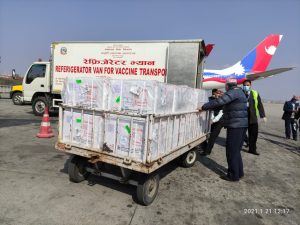On June 17, India and Nepal marked 75 years of official diplomatic relations. The two neighbors have multidimensional and dense relations, yet the relationship is also chaotic and marked by contradictions.
First, India has been an enduring feature in every significant political development in Nepal. It has been involved either directly or indirectly. India played a direct role in the 1950 democratic movement that overthrew the autocratic Rana regime, the 1990 people’s movement that established multiparty democracy, and the 2006 Jana Andolan (people’s movement)-II, which led to the overthrow of the monarchy. Some Nepalis perceive, though not entirely correctly, an Indian hand behind every change in government in Nepal. Even senior leaders allege a conspiracy by India when they are ousted from their position.
The first-generation leaders who fought for democratic Nepal also fought for Indian independence alongside Indian contemporaries such as Jawaharlal Nehru and Mahatma Gandhi. Therefore, the leaders of the two countries enjoyed a close personal bond. However, the subsequent generation had no such connections, and Nepal fell down the pecking order in Indian leaders’ priorities. That resulted in bureaucrats from Indian external affairs and intelligence agencies taking a more prominent role in dealing with Nepal.
Second, India is critical to Nepal’s security. On the one hand, India is Nepal’s primary conventional security threat. India’s colossal asymmetry in size, power, and capability is a massive concern for Nepal. Additionally, New Delhi’s absorption of Sikkim into India and Nepal’s territorial disputes with India heighten this threat perception. The Nehruvian doctrine that Nepal is India’s buffer with China and within the Indian sphere of influence continues to dominate New Delhi’s thinking. The 1950 Treaty also gives India complete leverage over the supply of military equipment to Nepal. Nepal has tried to bypass India and import arms from elsewhere but has faced severe consequences such as economic blockades along its border with India.
On the other hand, India is also the first country Nepal seeks support from during emergencies. For example, India was the first country to provide support during the disastrous earthquake in 2015 and also the first to supply Nepal with the COVID-19 vaccine.
Third, India looms large in the Nepali economy. In the 1950s and 1960s, Nepal traded almost exclusively with India. The total trade volume was small, but India accounted for 95 percent of Nepal’s foreign trade. Nepal maintained a small but positive balance of trade with India.
However, after the economy of both countries liberalized, trade volume increased exponentially, with Nepal’s imports from India outpacing exports to India by incredible margins. Currently, more than two-thirds of Nepal’s trade is with India. Nepal’s trade deficit with India was around $8 billion in 2020-21. For every $1 worth of exports to India, Nepal imports $10 worth of goods and services from India.
Nepal’s complete reliance on India for critical supplies such as petroleum products is of great concern. Similarly, Nepal’s food imports from India are rapidly increasing. From interdependence, Nepal has now become dependent on India.
Finally, India has a major influence in Nepal’s socio-cultural issues as well. From religious and cultural linkages to “roti-beti” (food and marriage) ties, Nepal and India share a common civilization and mythology to a great extent. The critical religious sites for Hindus and Buddhists span across the border. Anybody would be hard-pressed to separate Indians from Nepalis at the border areas. Many Nepalis have grown up on a steady diet of Bollywood. The two countries share a love for cricket.
At the same time, Nepalis strive for an identity independent of Indians. Any insinuation that Nepalis and Indians are similar is often opposed vociferously. Anti-Indian sentiment, reserved especially for the Indian bureaucrats and political leaders, runs deep.
Therefore, the India-Nepal relationship has been full of contradictions. Nepali leaders seek Indian engagement but resent it when it is not in their favor. India is a source of security and threat at the same time. Nepalis and Indians talk about brotherhood, but India is also the “other” in Nepal’s identity-making.
However, there is no contradiction in one sense: India is a reality that looms large over Nepal, for better or worse. That fact shapes the contemporary India-Nepal relations too.
Interestingly, the two countries did not mark the 75th anniversary day. There was not even a tweet from the foreign ministry or the embassy from either country.
This is because although the two countries established formal diplomatic relations just months before India got independence from the British in August 1947, India and Nepal have engaged with each other for millennia. The relationship is founded on an age-old connection of history, a shared civilization, culture, and religion.
Despite the lack of celebration, the India-Nepal relationship is a fascinating one that is as deep and wide as it is chaotic, and is likely to continue along the same vein.

































